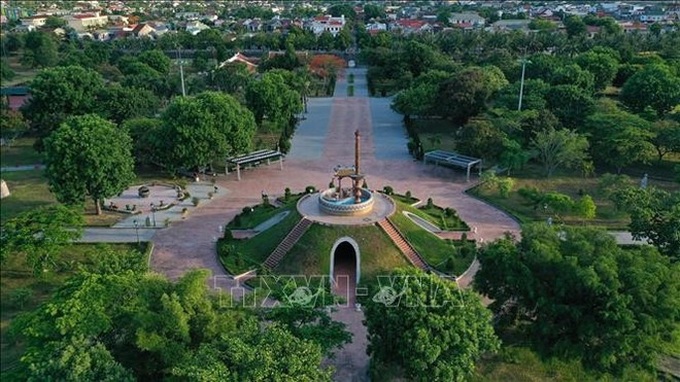
Inside Phong Nha cave, Quang Binh province (Photo: VNA)
The year 2025 is expected to mark a significant turning point for tourism in Central Vietnam, as localities in the region simultaneously roll out large-scale, strategic initiatives aimed at redefining cultural experiences for holidaymakers.
At the heart of this transformation is the annual national drive Visit Vietnam Year, hosted by Hue city this year under the theme “Ancient Capital, New Horizons.” This initiative is complemented by coordinated promotional campaigns in Quang Binh, Quang Tri, Da Nang, and Quang Nam, each contributing a distinct “instrument” to a powerful and harmonious “symphony” of the region’s heritage tourism.
According to Tran Thi Hoai Tram, Director of the Hue Department of Tourism, the return of the Visit Vietnam Year to the city for the second time is a “golden opportunity” for it to make a strong impression, fully leverage its cultural assets, and regain tourism growth momentum. Hue is introducing a range of creative new tours and experiential routes that showcase its strengths in cuisine, the iconic Vietnamese traditional dress “ao dai,” traditional festivals, craft villages, and ecological attractions.
In Quang Binh, the focus remains on adventure and eco-tourism, with the globally renowned Phong Nha – Ke Bang National Park and Son Doong Cave continuing to be the local crown jewels. The province aims to welcome 5.5 million visitors in 2025.
Quang Tri, rich in historical significance, is embracing digital storytelling and memorial tourism to bring depth and modern appeal to landmarks such as the Quang Tri Citadel, Hien Luong Bridge – Ben Hai River, and the legendary Ho Chi Minh Trail.

Monument to the heroes and martyrs at Quang Tri Citadel, Quang Tri province (Photo: VNA).
Meanwhile, Da Nang, the region’s most modern urban hub, reinforces its role as a regional gateway with the slogan “Enjoy Da Nang 2025 – Diverse Experience.” A dynamic calendar of music, culinary, and beach sports festivals, along with the famed international fireworks festival, is planned. Expanded international flight routes, dedicated cruise ship terminals, and the integration of digital technologies into tourism management and promotion further strengthen the city’s appeal.
Quang Nam is breathing new life into its iconic sites of Hoi An, My Son, and Cham Island – by combining local cultural depth with contemporary trends. The province is also promoting new eco-tourism, agricultural, and community-based travel routes in its mountainous west, diversifying the well-trodden path Hoi An – My Son – Cua Dai beach.
Though the region holds immense untapped potential, the true flourishing of its heritage tourism lies not only in promotion or infrastructure investment. A vital element is cultivating the art of heritage appreciation by offering travellers more profound, immersive experiences such as curated storytelling spaces, mindfulness and spiritual healing activities rooted in culture, and other forms of engagement.
